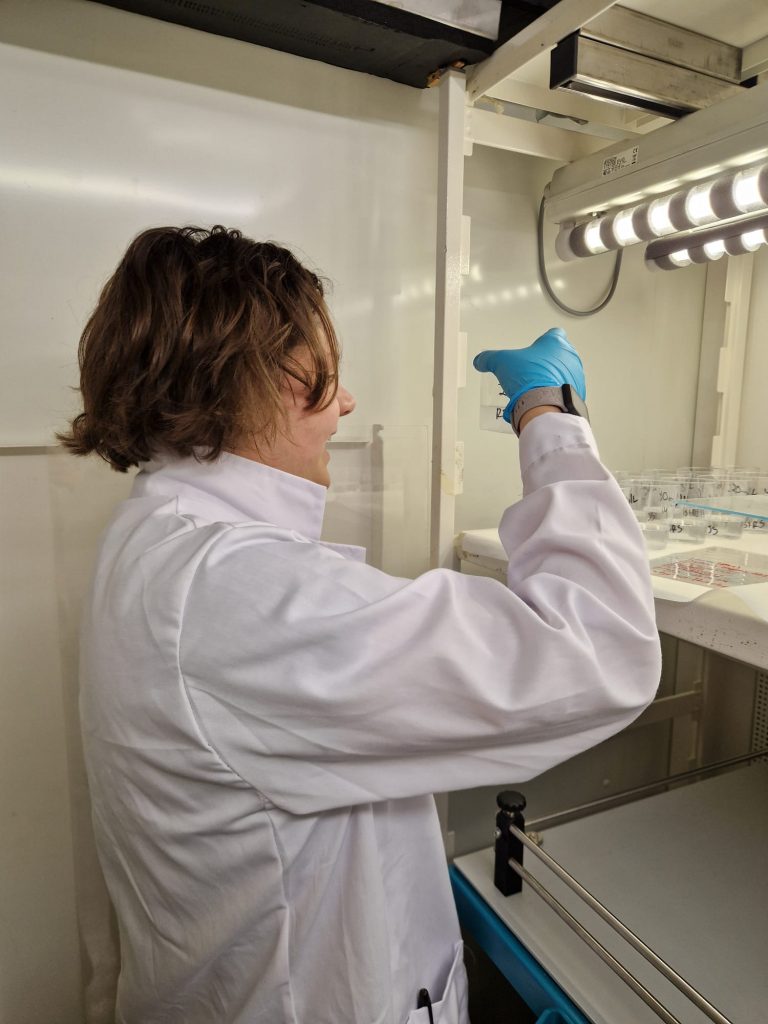At the end of April, the 2023/2024 cohort of the Ecotox master’s programme started the summer semester with a week-long ecotoxicology lab. Master student Jule Stern tells us about their experience.
The lab course is part of the module ETX1: Methods in Ecotoxicology. The goal was to investigate the effects of a pesticide, Thiacloprid, and an antiparasitic, Ivermectin, on Daphnia manga, at three different temperatures (15, 18, and 20 °C). This course was also a chance to learn how to work under Good Laboratory Practices (GLP). Therefore, the first task after a few theoretical lessons was to draft an actual study plan for the planned study, which was based on the OECD Guideline 202. After feedback from our supervisor Prof. Dr. Carsten Brühl, the study plan was finalized, and we prepared raw data sheets to have ready for the lab starting the next days.
In the lab, we were supervised by Dr. Alexander Feckler and Tamiris Rosso Storck. First, we were split into groups which either tested Thiacloprid (in the form of Calypso) or Ivermectin at 15, 18 or 20°C. We discussed our planned test concentrations, which we determined around EC50 values found in the literature (e.g. from the Pesticide Properties Database (PPDB)). In total, it was planned that each group test five different concentrations plus control, with four replicates each and five Daphnia magna per beaker. Not everything went as planned: because of insufficient Daphnia available, the organisms per beaker were reduced to four, and only two replicates were used. Additionally, just one control for each treatment with the same temperature instead of one control for each group was used, and some groups used Daphnia pulex instead of Daphnia magna.
Thiacloprid was used in the form of the liquid formulation Calypso. For homogenization, the bottle with the formulation was placed on a roller-stirrer for 30 minutes. Afterwards, the wanted amount was pipetted into a volumetric flask and filled with dilution water to generate a stock solution. Ivermectin was available as a solid, therefore it was weighted and, because it is not water-soluble, it needed to be dissolved before generating stock solutions. Therefore, also a solvent control was needed. The stock solutions were placed on a magnetic stirrer for 15 minutes. 50 mL of dilution water were measured in volumetric flasks and transferred into the test beakers. To reach a final total volume of 50 mL in the beakers, in the right concentration, a given volume of dilution water was pipetted out, and the same amount of stock solution was added.
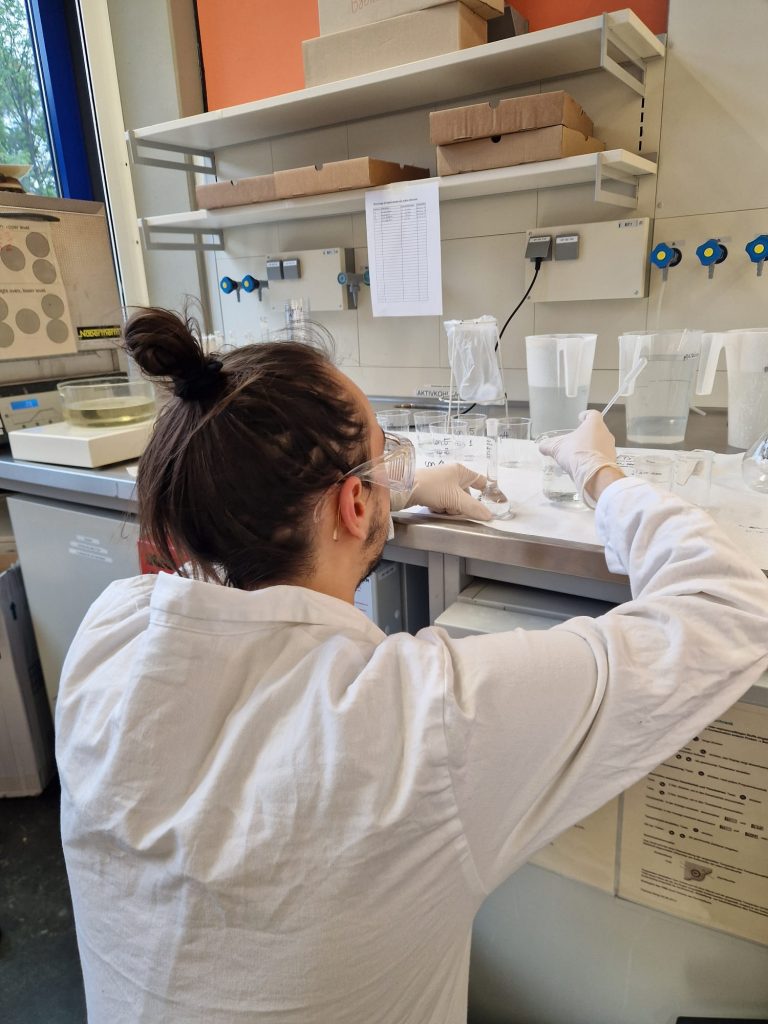
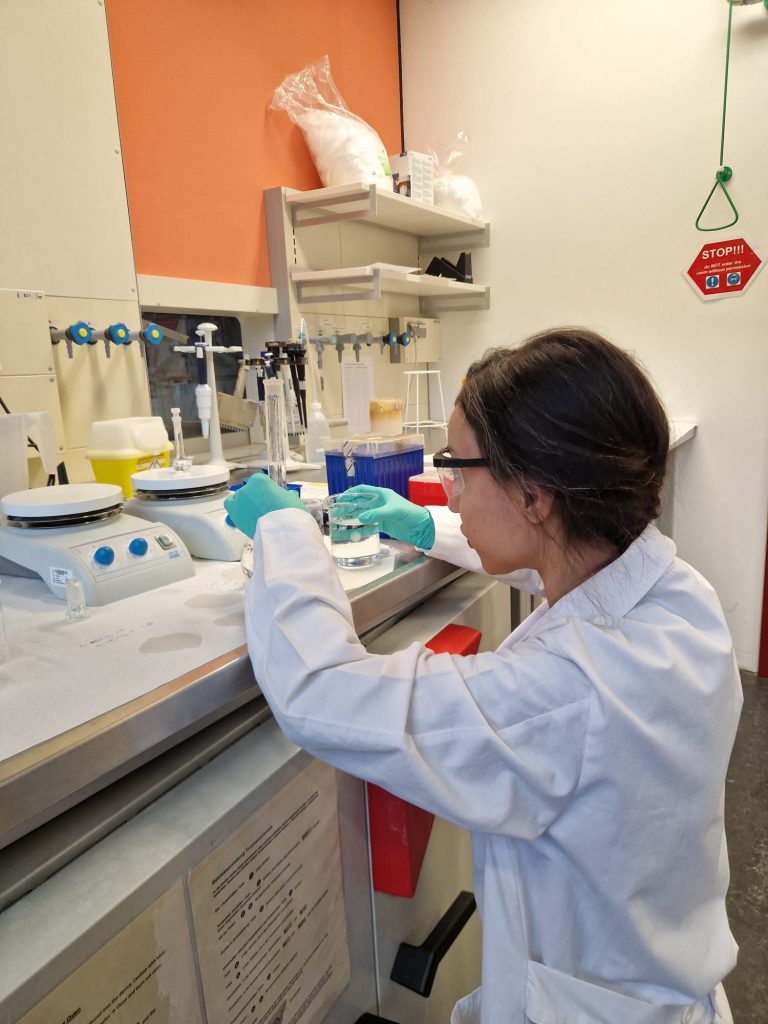
Different amounts of the stock solution were then pipetted into the beakers to reach the wanted concentrations. The above images show Ekin and Leon preparing their different concentrations of Ivermectin. In a separate beaker, each group measured the pH of the dilution water, as well as the temperature at the start and end of the study. Initially, the light intensity was also measured in the temperature-controlled rooms.
Afterwards, the Daphnia were transferred to the beakers with plastic piston pipettes with cut-off tips. Then the beakers were placed in temperature-controlled rooms and covered. The organisms were checked for immobility after 24 and 48 hours and used as a toxic endpoint. The appearance of the solutions (e.g. precipitation) in the beakers was also recorded. The picture above shows Rylee in the temperature-controlled rooms, checking the immobility of the Daphnia. If possible LOEC and NOEC will be calculated afterwards, as well as the EC50 values, and a dose-response curve will be plotted for each timepoint.
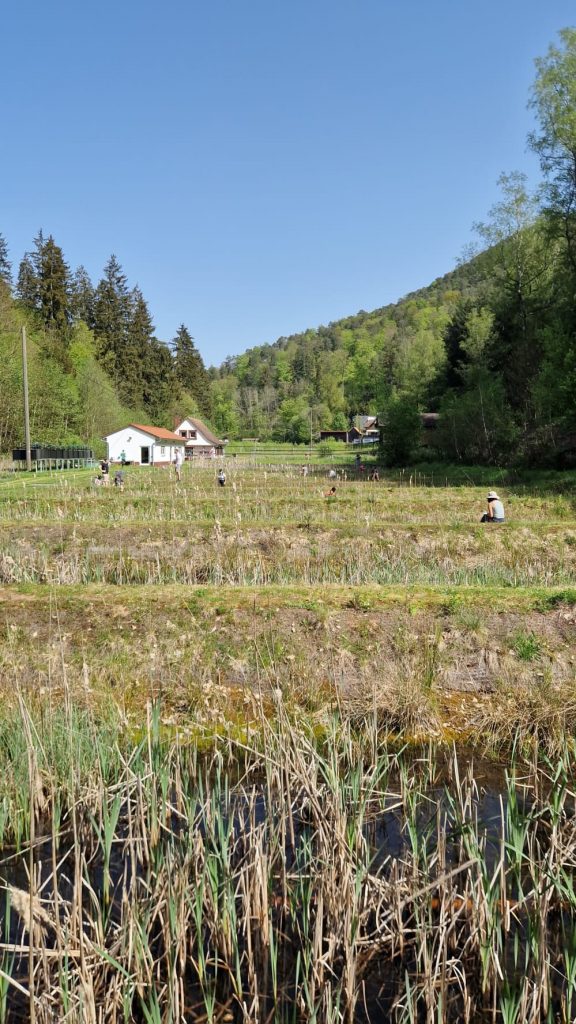

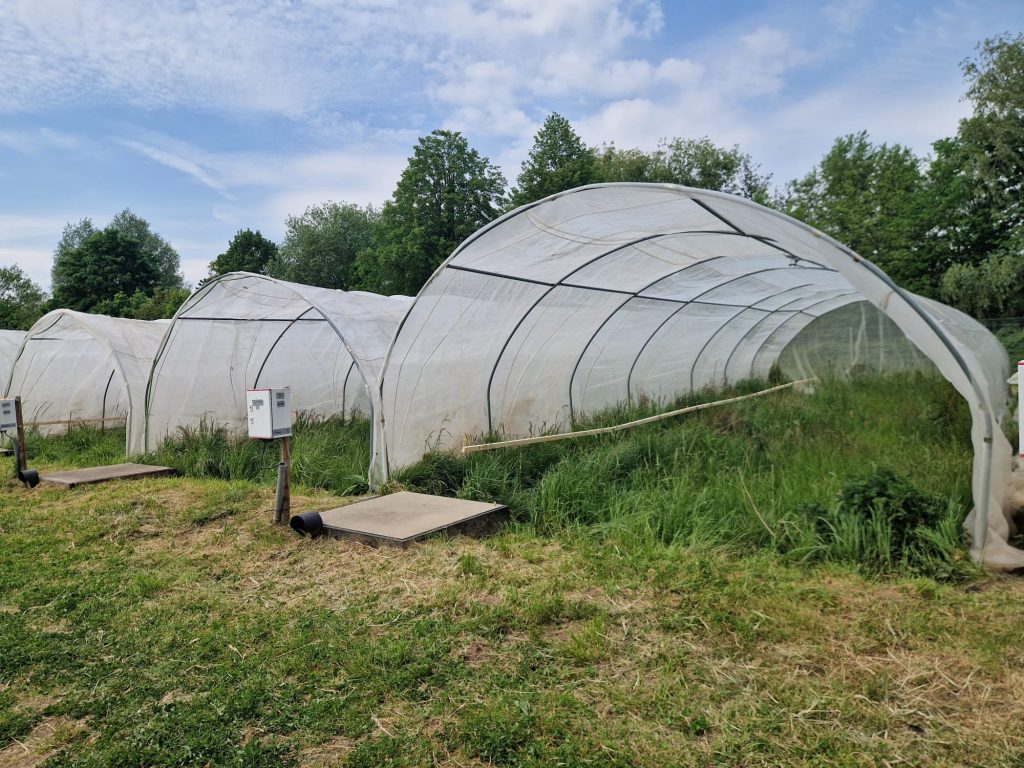
The second week of this course was the excursion week, where we visited, among others, the Eußerthal Ecosystem Research Facility (ERRES) and the Riparian stream mesocosm (RSM).
In the next weeks, everyone will be starting their AMEO (internships) for the summer, and we will hear more about them towards the end of the semester.

